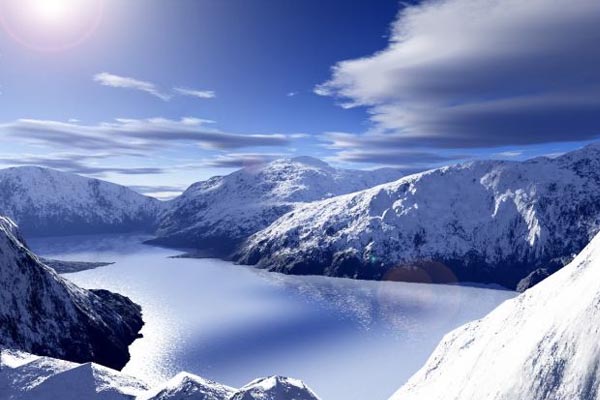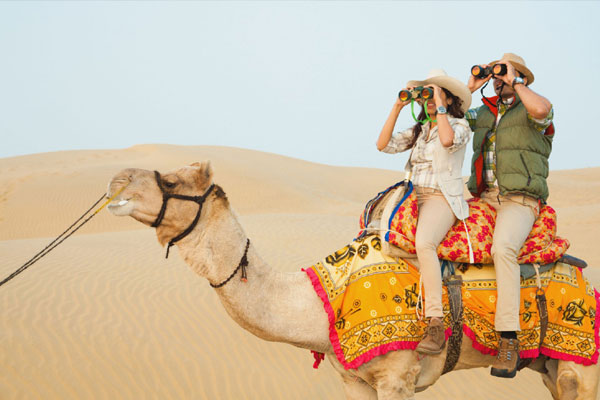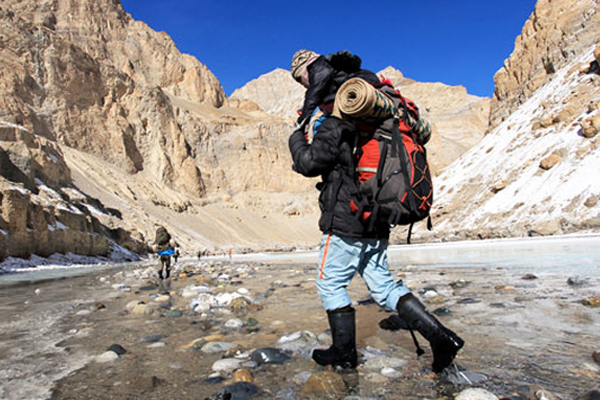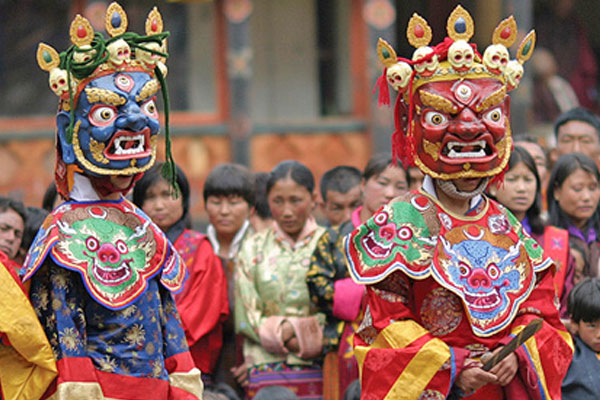
Lamayuru to Alchi Trek
Duraton : 2-day drive, 8-day trek-
Best Season End of May to September Duration 2-day drive, 8-day trek Grade Moderate This trek distills the very essence of Ladakh and in a short span of time, provides intensive experience of the land, its people and culture. Linking two of the oldest monasteries in Ladakh at its either end, the trail passes through dramatic desert mountainscape with vivid verdant villages tucked away into the hillsides. Highlights include the gompas at Lamayuru, Wanla, Sumdochoon and Alchi and ancient wood carvings at Sumdah Chenmo, all made in the 11th century by Rigzing Zangpo.
You will be met on arrival at Leh airport and transfer to hotel. Leh is situated at an altitude of 3500 M above sea level and need to acclimatize. Suggested to have a complete rest at the hotel.
Evening you will be taken at the top of the hill at Shanti Stupa offers an incredible view of Leh valley. Have some time at this place and retrace back to Leh by visiting Shankar Gompa enroute and Leh market. Overnight at hotel in Leh.
Leh Palace : This nine-storey dun-coloured palace took shape under 17th-century king Sengge Namgyal. Essentially it has been unoccupied since the Ladakhi royals were stripped of power and shuffled off to Stok in 1846. Located at the top of a small hill in main Leh market on walkable distance. Offers a magnificient view of Leh city at the roof top
Shey Palace : Thikse & Hemis monastery : by driving in the east of Leh city must visit Shey Palace and one of the most picturesque monastery called Thiske. Hemis Monastery is a Tibetan Buddhist monastery of the Drukpa Lineage, Situated 45 km from Leh by crossing Indus river and steep drive to reach at. This monastery was re-established in 1672 by the Ladakhi king Sengge Namgyal.
Back to Leh and overnight stay.
Drive five hours on the Leh/Srinagar Highway as far as Lamayuru, a splash of green against the stark desert with its charming village and a centuries old gompa. The afternoon is spent exploring the village and gompa. Lamayuru Gompa lies 15 km east of the Fatu La, with its medieval village seemingly growing out of the rocky hillside below it. In the past, Lamayuru has housed up to 400 lamas, but presently there are only 30 to 50 lamas living here, although about 150 lamas belong to the gompa. The other lamas stay and teach at Lamayuru's smaller daughter gompas located in outlying villages. Twice a year, all the lamas gather at the gompa for general prayers, accompanied by three days of masked dancing. These gatherings occur in the second and fifth months of the Tibetan calendar (usually March and July). Lamayuru belongs to the red-hat sect of Buddhism. Ancient legends say that at the time of Sakyamuni (the Historical Buddha), Lamayuru's valley was a clear lake where nagas (holy serpents) lived. The Bodhisattva Madhyantaka foretold that the lake would be emptied and a monastery built there. The legends continue by saying that Naropa, an 11th century Indian Buddhist scholar, came to Lamayuru and spent many years meditating in a cave, which can still be seen in the main Dukhang or assembly hall. Naropa then caused a split in the surrounding hillside and the lake emptied through this opening. After the lake emptied, Naropa found a dead lion previously covered by the waters of the lake. On this spot, Naropa built the first temple at Lamayuru, the Singhe Ghang (Lion Mound). Other historical accounts relate that in the 10th century the King of Ladakh ordered the building of Lamayuru gompa and placed it under the supervision of Rinchen Zangbo. The original gompa was composed of five buildings although only the central one still stands. In the 16th century, Ladakh's King Jamyang Namgyal was cured of leprosy by a lama from Tibet. In gratitude, the King gave Lamayuru gompa to this lama and also bestowed other privileges - no taxes were collected and the area surround the gompa was declared a sanctuary where none could be arrested. For this reason, Ladakhis still refer to Lamayuru as Tharpa Ling, the "Place of Freedom". Camp is set on a forested river bank below the village.
The trek starts after breakfast, passing through crumbling gorges. The path gradually ascends southwards, to the Prinkiti la (12,221 ft/3,726 m), reached in about an hour. Descend along a dry narrow gorge to the valley of Shillakong, through apricot orchards and beautiful willow groves, via the village of Shilla and on to Wanla village, dominated by its red-hued gompa.
The trail follows the Yapola before turning off into the Ripchar Valley which is dotted with tiny green villages at short intervals. It then arrives at Hinju, a large village with a typical cluster of mud houses built onto the hillside and bright green fields stretching out into the barren land. Camp is set by the stream, just below the village.
Explore the village and its surroundings.
After following the Ripchar Nallah for about an hour and a half, the trail ascends steeply up to the Konke La (16,236 ft/4,996 m) where the fierce winds on top of the pass are more than compensated for by the spectacular views all round. Descend into the pastures where the local people bring their horses, cows, dzos and yaks to graze. This is blue sheep and ibex country and if lucky, one might even spot the occasional red Himalayan fox. Camp in a meadow by the stream.
Continuing along the Sumdah Tokpo, the trail reaches Sumdah Chenmo, a beautiful village with some very interesting 11th century wood carvings embedded in the ground and exposed to the elements. According to local belief, great disaster will strike the community if the carvings are moved in any way. The monolithic structures are carved in a more basis folk style. Get back on the trail and, having waded across the stream, climb up to Lanka, a grassland dotted with quaint little shepherd shelters built with piled up stones.
After descending to the Sumdah Tokpo, the route turns east along the stream to Hasgo, along a very green valley and then north to Sumdah Choon, where camp is set for the night.
Rest day. Explore the very old and interesting monastery which houses some unusual bronze figures crafted in a style different from that prevalent in most Ladakhi and Tibetan monasteries. The figures have predominantly Indian features, rather than the mongoloid ones seen elsewhere in Ladakh. The monastery is small and has maintained the old monastic traditions undisturbed.
The trail ascends steeply to the Stakspi La (16,990 ft/5,180 m) where again there are wonderful views of the valleys on either side. A steep descent gets you to the campsite at Pulu.
A short descent to the end of the trail brings us to Alchi Gompa, located near the small village of Saspol. It is one of the earliest monasteries built in Ladakh, dating from the 11th century. Because it was built before the invading wars began in the 15th century, Alchi was built on lowlands, rather than on a hilltop as others were, in order to protect them from marauding armies. Walking towards the gompa from the small group of houses nearby, the first temple of importance is the Sum-stek temple, the oldest of the Alchi gompa. The temple is surrounded by wooden pillars and carved woodwork of mythological animals. The woodwork is original and reflects Kashmiri influence. The Dukhang is the place where the lamas gather for religious ceremonies. The walls along both sides of the Dukhang are covered by mural paintings which are probably original to the time of the monastery's founding. Of particular interest are the miniature scenes of royal life. The best preserved is the royal drinking scene which is one of the most remarkable to have survived anywhere in the Tibetan-speaking world. The costumes in this scene clearly depict central Asian dress and the king and queen each have a halo, a convention that appears elsewhere in Alchi and possibly shows Nestorian Christian influence from Persia. This is the only painting in Ladakh that shows central Asian influence so clearly. Camp at Alchi.
Vehicles await here for the return drive to Leh.
After breakfast you will get transferred to the airport in time to board flight for onward destination

















